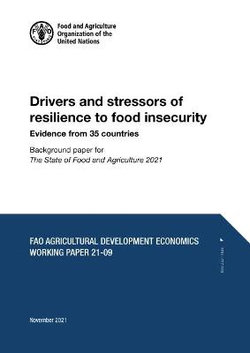Resilience is often associated with multivalued and multi-faceted strategies, programs, and projects. After approximately 15 years of empirical evidence in the literature, few research questions remain unexplored and unanswered, especially with the recent occurrence of a global pandemic. In this paper, we are assessing whether there are few and consistently relevant elements that determine resilience capacity as well as investigating which shocks are most dramatically reducing resilience. We also investigate which coping strategies are most frequently adopted in the presence of shocks. Our results show that diversification of income sources, education, access to land, livestock, and agricultural inputs, are the main drivers of households' resilience capacity. Moreover, the most prevailing shocks are found to be natural, health and livelihood-related shocks. In addition to this, we show that reducing the quantity and quality of food consumed, seeking an extra job, selling assets, taking credit, relying on relatives and social networks are the most adopted coping strategies. Finally, we found that coping strategies are able to mitigate the adverse effects of shocks on resilience capacity; however, they are not sufficient to offset their long-term negative consequences. Our conclusion is that adequate investments in resilience are conditional to a) engaging with activities that are broadly consistent across countries and b) fine-tuning the interventions based on context-specificity
- ISBN:
- 9789251352274
- 9789251352274
-
Category:
- Food manufacturing & related industries
- Format:
- Paperback
- Publication Date:
-
30-03-2022
- Publisher:
- Food & Agriculture Organization of the United Nations (FAO)
- Country of origin:
- Italy
- Pages:
- 45
- Dimensions (mm):
- 300x210mm
- Weight:
- 0.33kg
This title is in stock with our overseas supplier and should arrive at our Sydney warehouse within 3 - 5 weeks of you placing an order.
Once received into our warehouse we will despatch it to you with a Shipping Notification which includes online tracking.
Please check the estimated delivery times below for your region, for after your order is despatched from our warehouse:
ACT Metro: 2 working days
NSW Metro: 2 working days
NSW Rural: 2-3 working days
NSW Remote: 2-5 working days
NT Metro: 3-6 working days
NT Remote: 4-10 working days
QLD Metro: 2-4 working days
QLD Rural: 2-5 working days
QLD Remote: 2-7 working days
SA Metro: 2-5 working days
SA Rural: 3-6 working days
SA Remote: 3-7 working days
TAS Metro: 3-6 working days
TAS Rural: 3-6 working days
VIC Metro: 2-3 working days
VIC Rural: 2-4 working days
VIC Remote: 2-5 working days
WA Metro: 3-6 working days
WA Rural: 4-8 working days
WA Remote: 4-12 working days





Share This Book: